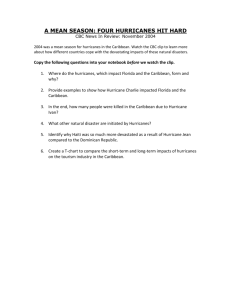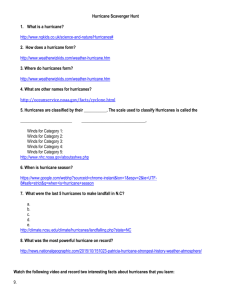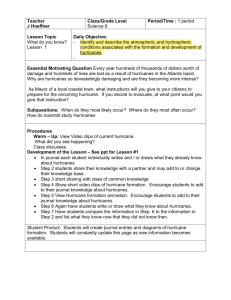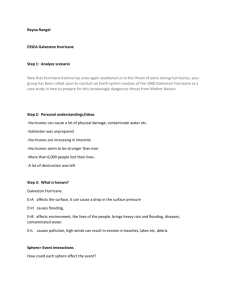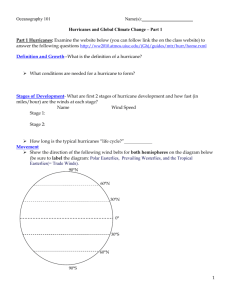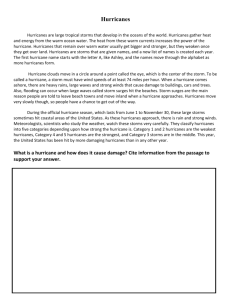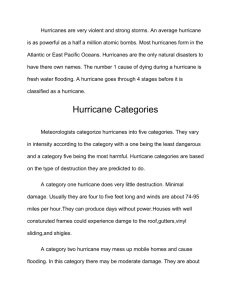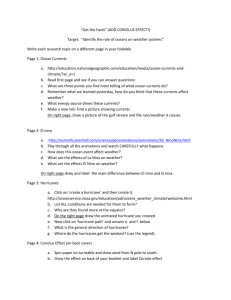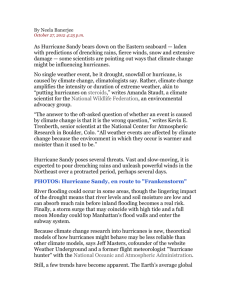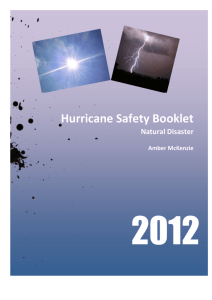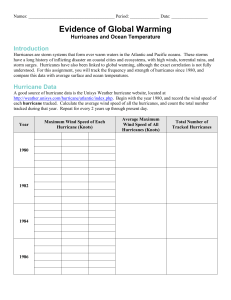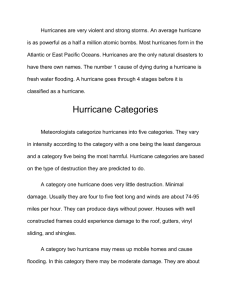Group 2 Hurricanes
advertisement
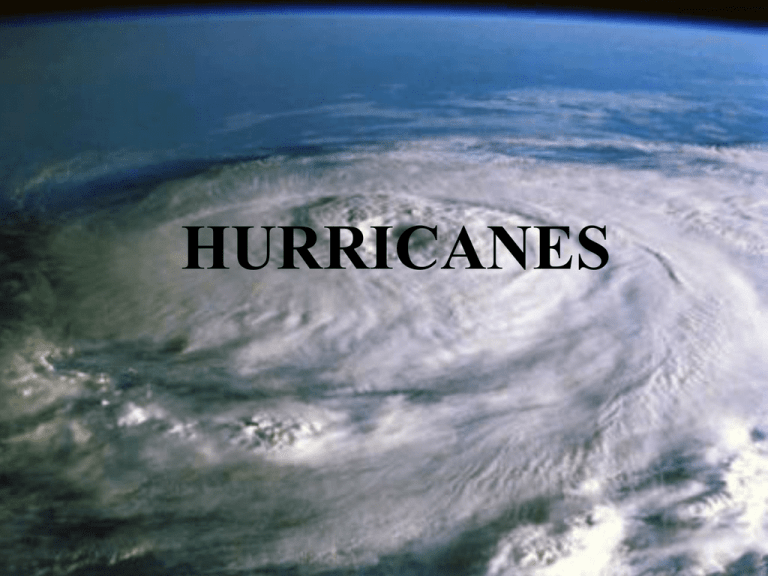
HURRICANES Title Page Subject: Caribbean Studies / Geography Form: 6 A Group Members: (1- 5 ) • Axcel George • Daliesha Guy • Dion Browne • Keivaugh Noray • Onecia Alexander Teacher: Mrs. Moore Topic: Developing Geographic Awareness Easterly Waves Easterly waves are the starting points of hurricanes. They bring low pressure, increases wind strength and sometimes brings about rainy or cloudy weather. TROPICAL DEPRESSION • Tropical depression is the result of the formation of the Easterly waves into a system, at this point the pressure at the centre is low and wind speeds range from 20-34 knots (23-39 mph) with cloudy and rainy conditions. TROPICAL STORM • Tropical Storms are formed when wind speeds increase to 35 to 64 knots (39 to 74 mph). This means the air pressure continues to decrease, generating stronger winds. INTRODUCTION TO HURRICANES What is Hurricane? A Hurricane is an intense, rotating oceanic weather system that possess maximum sustained winds exceeding 119 km/hr forming and intensifying tropical oceanic regions. When do Hurricanes occur in the Caribbean? Hurricanes usually occur during the period of June 1st November 30th. During this period the tropics is too warm and therefore the tropical marine climate in the Caribbean experiences a number of low-pressure systems that can develop into hurricanes. CAUSE OF HURRICANES How do Hurricanes form ? - Convection of air - Increment in the convection of air producing warm conditions at great heights - Buoyancy of air - Pressure continues to drop because of rising air. - Corilios Force impacts the spinning effect on the entire system. - Extremely low pressure system. - Generation of strong winds. Impacts of a Hurricane Hurricanes cause various impacts on where ever it strikes some impacts are: 1. Physical Impacts 2. Social Impacts 3. Economic Impacts Physical Impact • This includes destruction of homes, property and life stock. • Precious land marks may be damaged or destroyed. • Pollution of fresh water supply. Social Impact • Powerful winds and massive floods have left many individuals homeless. • Unprepared individuals have a greater chance of death. • On a positive note hurricanes have given countries a better foresight allow in them to greater prepare themselves Economical Impacts • Hurricanes can lead to millions of dollars lost in destruction of homes and repairs. • Tourism base countries also suffer a great economic lost due to the lack of visits after a hurricane strike. MITIGATION STRATEGIES • Families should store food, water, medical supplies and other basic commodities before the hurricane • Educate people about the causes, risks and warning signs of hurricanes. • Have a good early warning system in place. Local and regional weather information can be used to let the public know when the hurricane will strike and how long it will last. Case Study on Hurricane Charlie • Hurricane Charlie struck Kingston Jamaica in the year 1951 with 110 mph winds, and rains that reached 17 inches. It brought about mass destruction, 154 people dead, more than 2,000 injured and an estimated 25,000 persons homeless. The co-operate areas contributed to 12,000 homeless while more rural areas like; St. Thomas, added 3,000 homeless people to the already large number. All in all, Hurricane Charlie was one of the worst disasters to take place in Jamaica and it is the hope of the people that it would be the last. BIBLIOGRAPHY • Mohammed, Jennifer. (2007). Caribbean Studies for Cape Examination. Macmillan Publishers Limited. • Lalah, Robert. (August 17th, 2006). Hurricane Charlie revisited – August 17th, 1951. October, 13th 2013. • http://jamaicagleaner.com/gleaner/20040811/lead/l ead2.html
